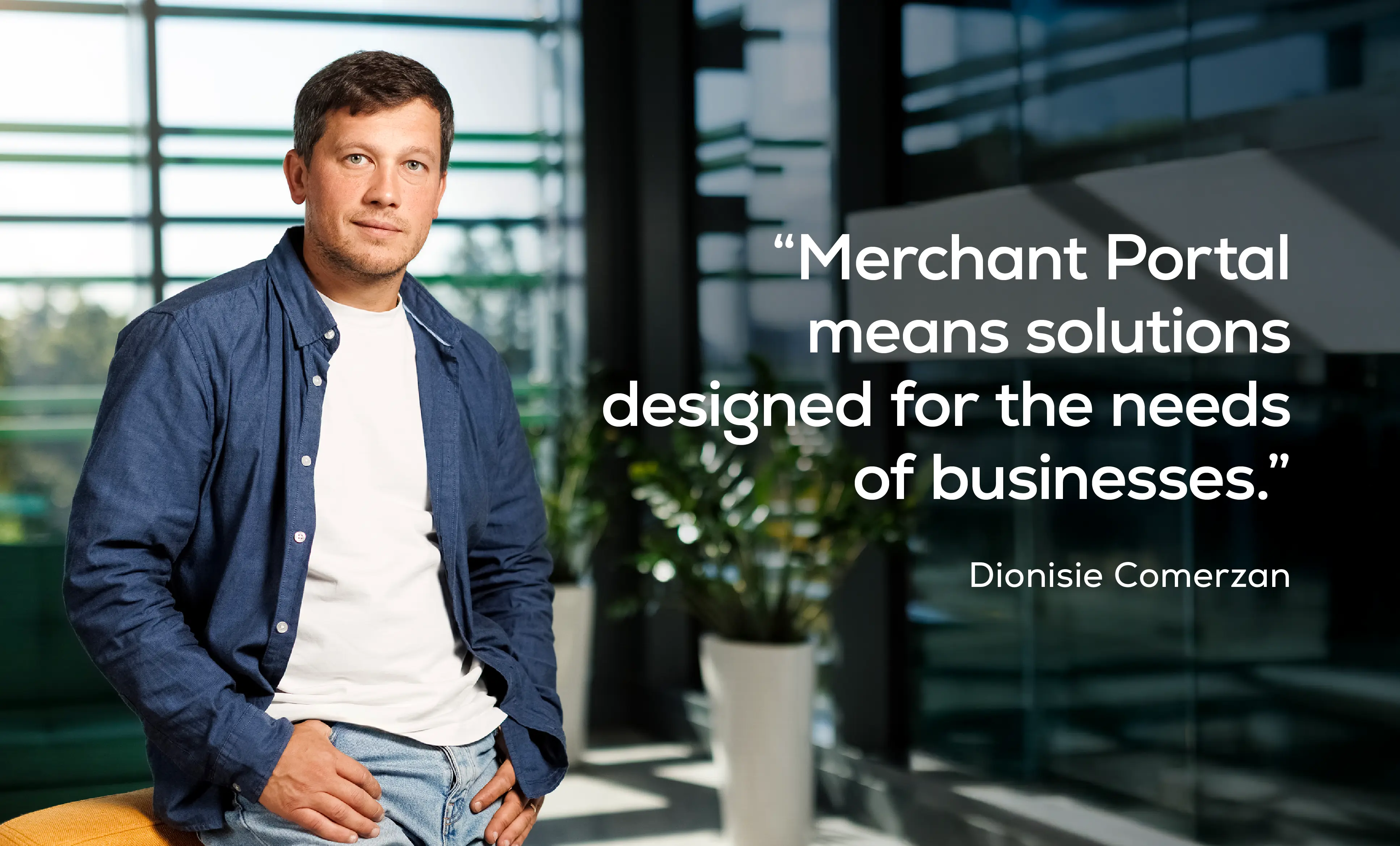Interview with Dionisie Comerzan, Payments Orchestra Lead at maib
Dionisie, hello. Maib has not yet officially started promoting the merchant portal, but it is already actively running. So I have a journalist’s favorite opportunity: to share news that not many people know yet. Let’s start with the essentials: what is the merchant portal at maib?
If we talk about the essentials, we shouldn’t start with the portal itself, but with the needs of the merchants.
To clarify the terms: what do we mean by merchants...?
Merchants are the bank’s clients who use payment acceptance services, meaning they receive money for their goods or services via bank cards or other electronic payment systems. This includes both online retail companies and those that accept payments via terminals at points of sale or upon delivery. All of these are considered merchants.
So you started from the merchants’ needs?
Exactly. We are constantly in touch with our clients and strive to understand their needs as thoroughly as possible. At one point, we realized that beyond the technical processing of payments, it is vital for clients to have full control over the informational flows in their business. They want to see sales figures here and now, in structures that are easy to analyze—not when the money hits their account, but at the very moment the payment is made.
Is such a level of transparency possible? After all, the bank needs time to transfer the money to the client’s account after a card payment.
Yes, that time is necessary, but we can provide information about the payment much earlier than when the money actually reaches the account. In a way, this information is even more valuable because it is available immediately. Except for certain special cases, the money already belongs to you; it will just be credited a little later. In addition, the merchant portal solves another important problem.
Which one exactly?
We’ve saved the client a lot of time. In the past, for any issue related to acquiring, they had to come to the bank or make a phone call. Now, they have a portal where they can resolve issues themselves and access all the necessary data.
How much has the client’s level of awareness about their operations increased with the introduction of the merchant portal?
Let me give you an example. Through the merchant portal, you can see in real time how sales are performing across all distribution channels. Not just at the store level, but for each cash register, since information is collected separately from every terminal. You can even see the commission that will be deducted for those payments. Most importantly, you can see exactly how much money will enter your accounts. Additionally, the portal provides analysis tools: daily, monthly, or yearly data, depending on your needs.
So I can see my future receipts from the moment of authorization, a day or two before they actually reach my account?
Exactly. And not only that: you can analyze the data across multiple criteria—which types of cards were used, the share of cards issued in Moldova, the share of international payments, and which transactions were made via MIA. You can also export this data and use it in your own analysis systems.
What other functionalities does the portal have?
Another aspect relates to customer loyalty. Through the data in the merchant portal, you can see how many new customers have come during a period, how many return and how often, as well as the average transaction value. You can also analyze payment flows separately from clients of our bank or other banks, in order to estimate additional costs from interbank transactions.
If you are a partner in maib’s cashback or premium card discount programs, you also have access to these figures reported against turnover, which helps you evaluate the effectiveness of marketing campaigns carried out with the bank. Moreover, you can compare your results with the average transaction value in your sector.
How exactly?
As the largest bank in Moldova, maib has access to a significant volume of analytical data, since we process payments across all sectors of the economy. We can calculate the average transaction value for a specific industry, the market size, and a client’s share in that market. This allows you to compare your company’s average transaction value with the industry average or to monitor the evolution of your market share.
Very useful for analysis—the comparison with the market is a great self-monitoring tool for a business.
I would also add that through the merchant portal, you can manage QR codes for payments via MIA: you can generate, send, or even cancel them.
You really prepared thoroughly for the portal launch. Why haven’t you started promoting it widely yet?
We wanted to be 100% sure that everything works flawlessly. That’s why in May we launched a pilot for a limited number of clients and tested the portal’s functionality in practice. But the ultimate goal is for the portal to be integrated into the maib business app by the end of the year, making access as convenient as possible for clients.
Congratulations. From what you’ve told and shown me during the interview, maib provides clients with a powerful analytical tool that will significantly increase their efficiency in managing their business.
Our plans go beyond analytics. We are working on developing features that will allow merchants to create and manage advertising campaigns, directly targeting their audience.
Let me clarify: does this mean that, in addition to targeting through social networks, I will soon be able to set up campaigns directly in maib? For example, to show ads to all my clients who made repeat purchases within a month?
I can’t respond exactly to your formulation, but broadly speaking, you understood correctly. We are moving toward creating a true ecosystem for our clients. By connecting the needs of both legal entities and individuals—both maib clients—we aim to increase efficiency and convenience for each of them.
Source: Pavel Zingan


 maibank
maibank
 maib business app
maib business app
 online loans – legal entities
online loans – legal entities
 internet banking - individuals
internet banking - individuals
 new internet banking - maib business
new internet banking - maib business
 internet Banking - BankFlex
internet Banking - BankFlex




